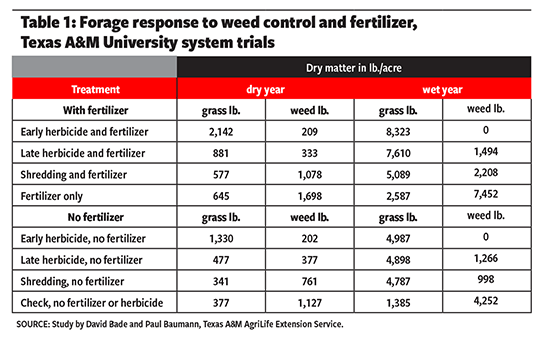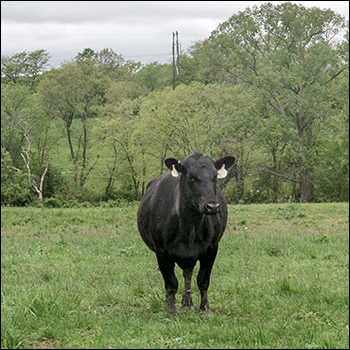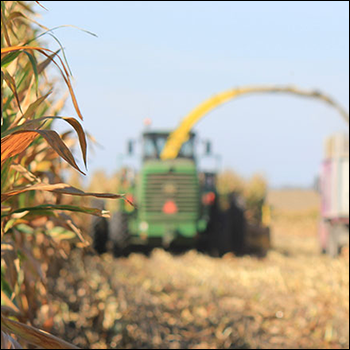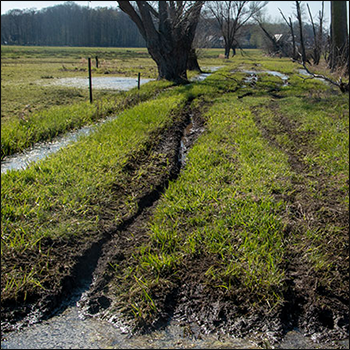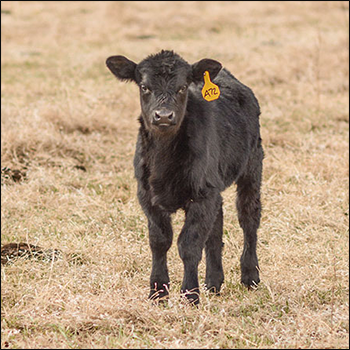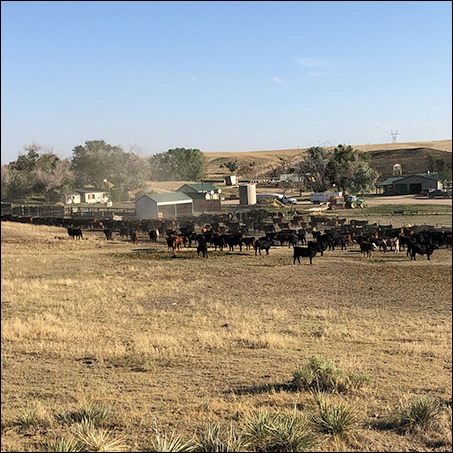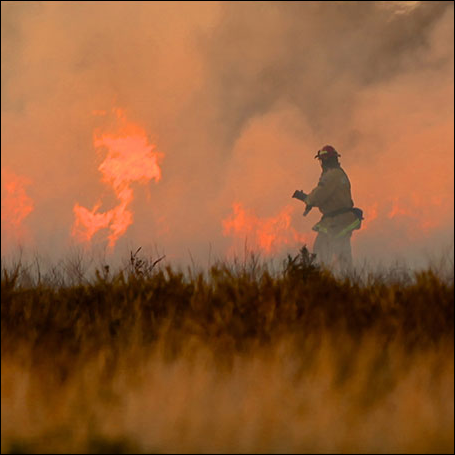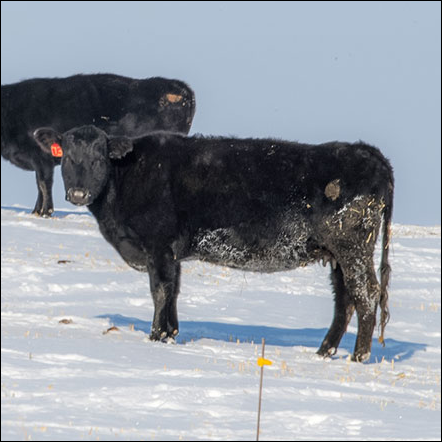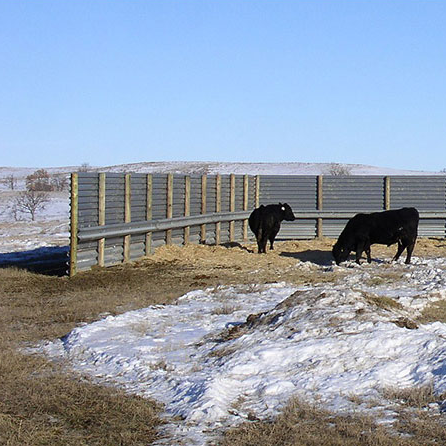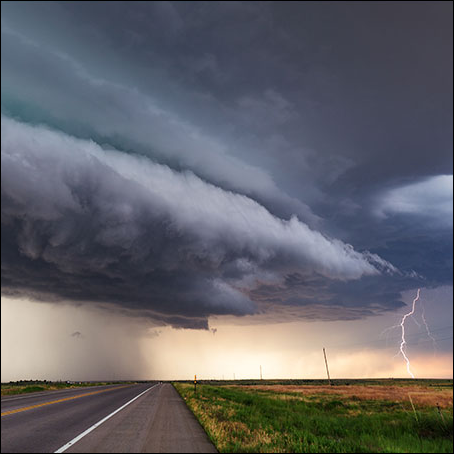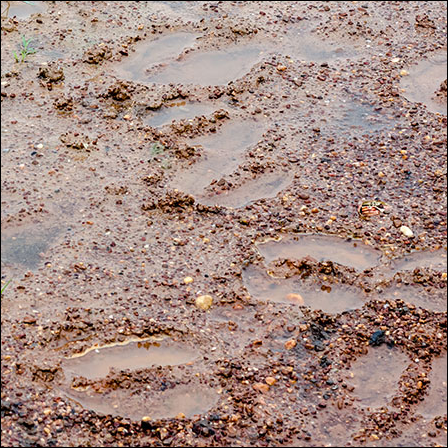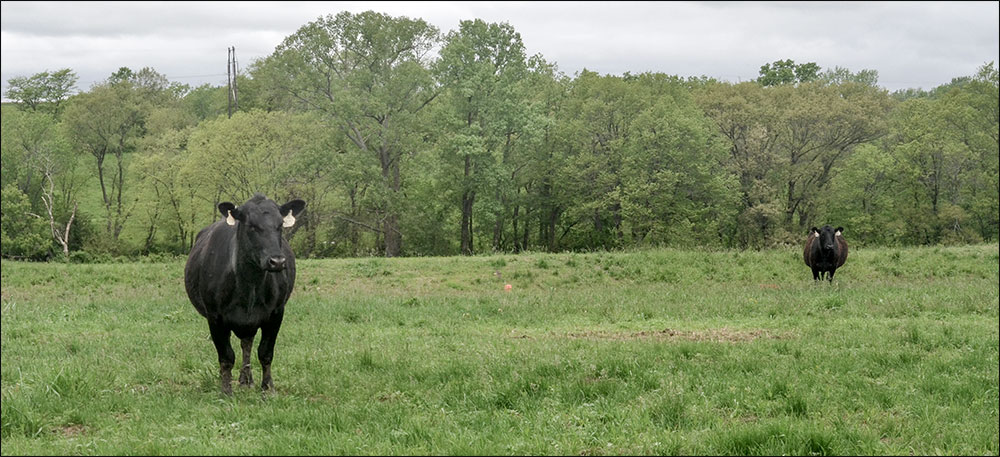
Weather Wet or Dry, Spray Annual Weeds Early
Reducing the weed load promotes more grass production.
Will 2021 be wet or dry in your area? Hedge your bets. Spray annual weeds early for maximum benefit. The sooner you remove serious weed competition, the better your grass responds. That’s true almost anytime, but it’s especially true when weather turns dry after you spray.
“We see it in trials. We see it in experience,” says Chad Cummings, a Texas-based field scientist with Corteva Agriscience.
The most famous example may be a two-year demonstration in Brazos County, Texas, by David Bade and Paul Baumann. Bade was an Extension forage specialist and Baumann an Extension weed specialist with Texas A&M AgriLife Extension Service. Both specialists are retired today.
The pair compared early and late-season herbicide applications with shredding and no weed treatment in fertilized and unfertilized coastal Bermuda grass pasture (see table). Prior to the test, the pasture had not been fertilized or treated for weeds in at least five years.
The demonstration covered two very different weather years. In the first year, a summer drought reduced all forage responses. The next year, above-normal rainfall boosted all responses.
In both years, the specialists applied the early herbicide treatments in early May to weeds 3 to 6 inches (in.) tall. The late applications they sprayed in mid-June on weeds 8 to 12 in. tall. For the shredding plots, they shredded at the same time as the late herbicide treatment.
The specialists used five herbicides at label-recommended rates in the study. Each herbicide provided good control of the weeds on the respective product labels. Yields in the table are an average of the herbicides.
Fertilized plots received two applications of fertilizer, according to soil test: 350 pounds (lb.) of 19-19-19 in mid-May and 350 lb. of 15-5-10 in mid-July.
Cummings says there’s a lot to learn from the demonstration:
- On annual weeds, early spraying consistently controlled the most weeds and yielded the most grass — wet or dry, fertilized or not.
- Herbicides, especially used early, shifted pasture composition from mostly weeds to mostly grass. “That helps with pasture utilization,” Cummings says. “Cattle aren’t avoiding some areas because of weeds.”
- Without weed control, fertilizer benefited weeds more than grasses. Grasses did not outcompete weeds. Total production increased, but yield remained mostly weeds.
- Weed spraying increased grass for the least cost. Compared with untreated, early spraying more than tripled grass production in all cases.
- Fertilizer, however, changed the forage composition from predominately native brownseed paspalum to higher-yielding coastal Bermuda grass. Fertilizer with herbicide improved both forage yield and forage quality.
- In wet years, shredding may be better than no weed control, but it’s not cheaper. “Shredding once costs about the same or more than a single herbicide application,” Cummings says. “If you rely on shredding, you’ll probably need to repeat it in the same season to stay ahead of weeds.”
Editor’s note: This article is provided by Corteva Agriscience. Photo by Kasey Brown.
